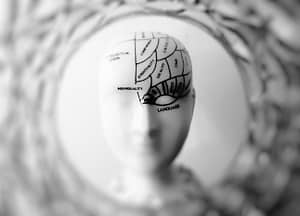Most of our movements- the way we sit, stand, eat- are happening subconsciously. Furthermore, we all have preferences for doing things on one side or the other, and in one way or another. While handedness plays a role in this, our neurology and the way our brains are wired play a much larger role.
Most of us have heard that we have different functions for the right and left sides of the brain. As far as physical function, the right brain controls the left side of the body, and the left brain controls the right side of the body.
The perception of the two sides of the brain is a bit more nuanced. The right brain manages sustained, broad, and vigilant alertness. Conversely, the left brain has a narrow, sharp, and focused attention to detail. The right brain is more focused on the big picture, the surroundings, what’s going on in the background. The left brain is more alert to what’s right in front of us, the immediate task at hand, what’s next on the agenda, etc.
An example of how the two sides of the brain work together is driving a car. In this situation your left brain has focused attention on the road in front of you. While this is very important, it is also important to be aware of your surroundings. Your right brain is broadly scanning the environment for potential threats such as other cars, pedestrians, hazards, and so on.

The left brain contains the centers for speech and language. Since the left brain controls the right side of the body, the right arm becomes prominent in communication, growth, and development. Even in left handed people, there is a tendency for the right shoulder complex to be tipped forward and down as a physical representation of the interactive quality of the right side. This is because even though handedness is a strong driver of pattern, the brain and nervous system are far stronger.
This normal and natural asymmetry can be problematic when it is not balanced with left arm neurological and muscular activity, so in clinic we work on changing movement patterns at the level of the nervous system. My patients often tell me that when they do their exercises at home, they are not sure if they are doing it right and it feels hard to keep track of all the movements in the exercise. I always tell them this is exactly what we want, because we are trying to change a movement pattern, not just get stronger. You can go to the gym by yourself and lift weights if your goal is muscle mass. What you need from physical therapy is to learn how to change the wiring of brain and body, to become better balanced right to left in three dimensions. For this to occur, it will probably feel like your brain is working just as hard, if not harder, than your body when you do your home program.
Learning to change a movement pattern is like learning to drive a car. At your first driving lesson, there was an overwhelming amount to pay attention to: hands on the wheel, gas, brake, checking mirrors, road signs, and if you had a clutch then that’s a whole different animal. But now, you drive somewhere and think, “wow, I don’t even remember driving here, I’m just here!” That’s because the neurological and muscular systems have become automatic through repetition, but you had to start with a very “thinking heavy” process to get there. You had to pay attention in the beginning, and now it just happens naturally.
That is how we bring our body into balance, by literally re-wiring the neurological and muscular patterns in the body. We use conscious effort until it becomes unconscious. Because the reality is that so much of what we do in our day is unconscious; but if those daily patterns are not regulated by transitioning well from right to left and back again, we develop strong patterns that create structural weaknesses, instabilities, and pain syndromes like fibromyalgia.
One simple way to balance the left and right sides of the body is through a breathing technique called “nadi shodhana” in sanskrit, which we can loosely translate as “alternate nostril breathing.” This technique is simple and very soothing to the nervous system as it creates a deep sense of balance in the body at a neural and respiratory level. See the video below to try it out.

